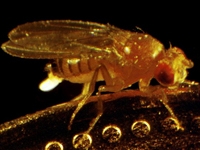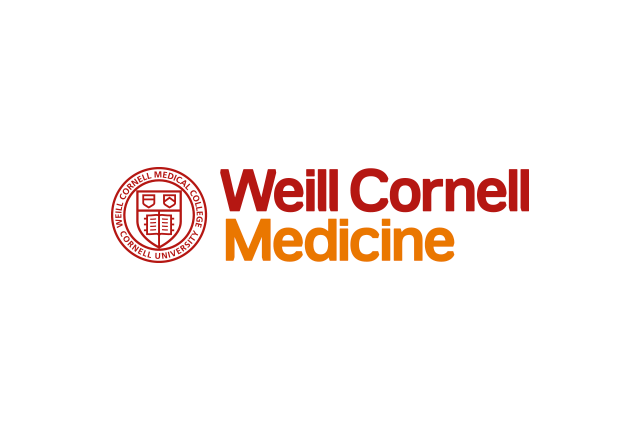
Drosophila melanogaster, or the common fruit fly, is an important model organism for scientific research such as stem cell therapeutics.
Drosophila melanogaster, more often known as the fruit fly, has long been used as a model organism for both genetics and developmental biology. However, a recent lecture by Dr. Allan Spradling, the William D. Stubenbord Visiting Professor at Weill Cornell and director of the Department of Embryology at the Carnegie Institute of Washington, made the case that Drosophila can be a model for the complex and emerging science of stem cell therapeutics.
"For several reasons, you can hardly imagine how well-suited a fruit fly is for studying stem cell biology," Dr. Spradling said. "The Drosophila stem cell system is much like the more complicated vertebrate system, but stripped down just to the essentials."
Dr. Spradling has used Drosophila in a number of stem-cell-related projects, including the identification of regulatory cells that govern stem-cell replacement and differentiation in vivo, the mechanisms by which cells can "de-differentiate" back into stem cells, and the identification of stem cells in the Drosophila intestine.
In 2000, Dr. Spradling began using Drosophila to revisit the role of "niches"—the microenvironments surrounding stem cells that regulate their differentiation—because the relatively straightforward production of Drosophila embryonic germline stem cells could be studied in vivo, unlike their mammalian counterparts, which had only been studied in culture to that point. Additionally, because of a very clear lineage property in the production of stem cells within the Drosophila ovary, the cells could be marked genetically, making them distinguishable from one another as either differentiated daughter cells or persistent stem cells.
"Our first surprise was that stem cells are not stable; nor are they all that permanent," Dr. Spradling said. "There is a turnover, or replacement, and somatic stem cell replacement is occurring from a distant source." That source was often, although not necessarily, neighboring stem cell "daughters," leading Dr. Spradling and his team to propose that cell "de-differentiation"—the reversion of a specialized cell back into a stem cell—could be closely studied in Drosophila.
Although stem cell "de-differentiation" was known to occur in natural systems in general, and in the human liver specifically, the process had never been closely studied in the laboratory, because mammalian stem cell organization, behavior and regulation had not been characterized well enough at the cellular level.
Dr. Spradling and his laboratory blasted Drosophila larva with a regulatory protein that induces stem cell differentiation in the ovary. As the protein disappeared, they were able to closely monitor the "de-differentiation" process, which occurred uniformly without cell loss and without affecting the insects' fertility as adults.
While a great deal of research, media and political attention has focused on the process of differentiating a stem cells into target tissues (and perhaps one day, complete organs), Dr. Spradling believes the reverse process may be a quicker route to stem cell therapies, because stem cell behavior is so heavily affected by its environment. By studying the "de-differentiation" of specialized tissue cells back into stem cells, scientists may be able to eventually reverse-engineer stem cell therapies.
"Stem cell biology is relevant because, to some extent, all cells respond to their environment," Dr. Spradling said. "These are very dynamic systems, and there is a great deal of environmental influence. We need to understand why these cells make the decisions they make."
This year's William D. Stubenbold Visiting Professor Lecture was presented by the Department of Cell and Development Biology and sponsored by the Louis Calder Foundation. The Stubenbord Fund was established by the Louis Calder Foundation in memory of Louis Calder Sr. and in recognition of the outstanding professional services and long friendship of the late William D. Stubenbord for them and members of their families.

